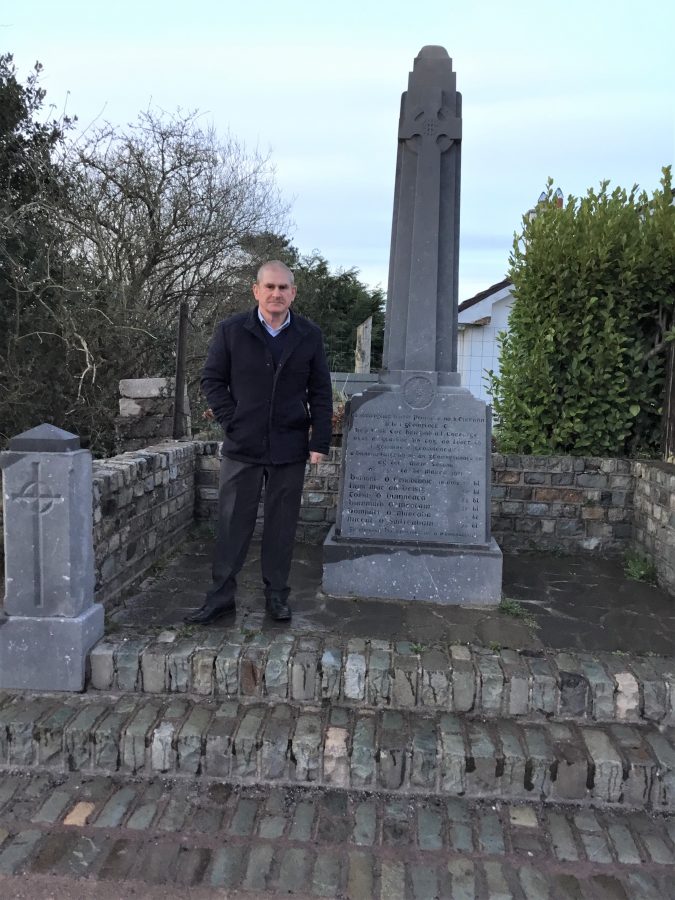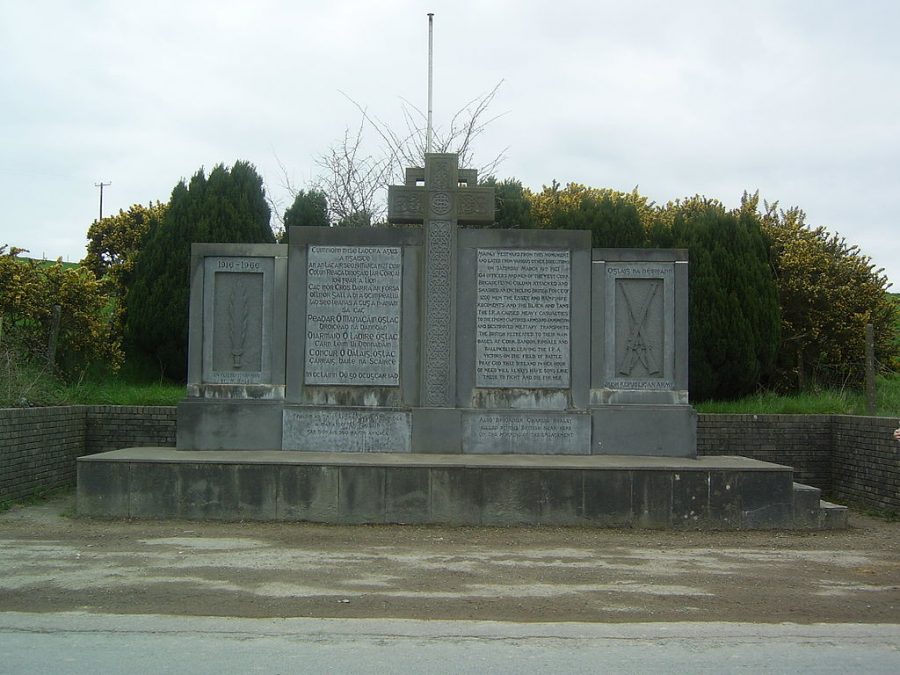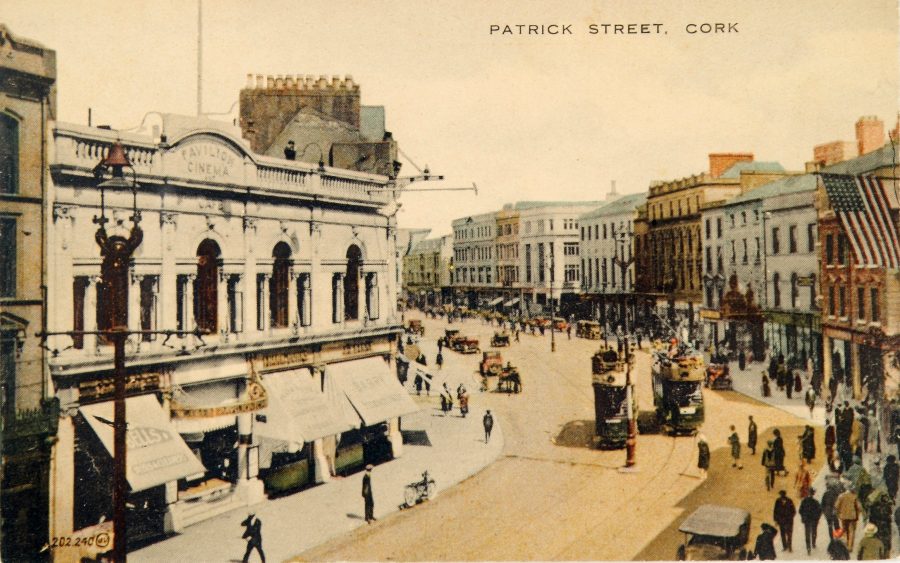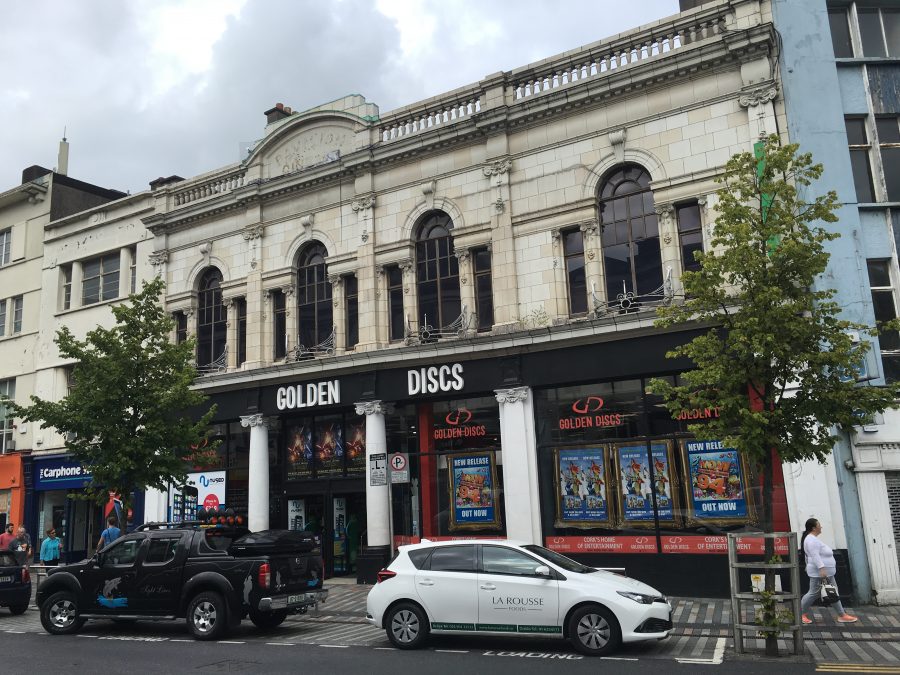
Kieran’s Our City, Our Town Article,
Cork Independent, 25 March 2021
Journeys to a Truce: The Ballycannon Boys
At Ballycannon, Kerrypike lies a memorial (erected in 1945) to the memory of six young IRA men that were killed near the spot on 23 March 1921. Farmer Cornelius O’Keeffe was witness to the killing of the six men. His detailed affidavit appears in the appendix of the witness statement in the Bureau of Military History of Daniel Healy, C Company, 1st Battalion, Cork IRA Brigade No.1.
Aged 21, Cornelius O’Keeffe had a farm of 105 acres, which was situated on the northern side or the high road leading from Cork to Blarney and was approached by a laneway leading from main road. The farmhouse consisted of a kitchen, parlour and four bedrooms. There were also extensive out-offices, barns, and sheds for cattle, also stables. It was one of the safe houses for the IRA.
In his affidavit, Cornelius remembers that on the night of Tuesday, 22 March 1921 about 11.30pm on that night there was a knock at his door after they had all gone to bed. He asked, “Who is there?” and a voice replied, “There are a couple or us [volunteers] going to sleep down in the stables; give us a call at seven in the morning”. He said “alright” and went to sleep.
About 4am, there was a thundering knock at his door. He leapt out of bed and looked out through the window. He saw the police outside. Before he could say anything, they roared at him to open the door. Cornelius relates:
“Just as I rushed downstairs to open the door it was burst open by the police and they said to me “Why the bloody hell didn’t you open the door”? I explained that the delay was due to the lamp not 1ighting. They then asked me if I had any man in the house. I said there was no win there only myself. They asked me if there were any men in the out-house. I said, ‘I can’t tell but the doors are unlocked’. They ordered me back to bed and searched the buds and the other rooms in the house. They then went outside, and I heard then search the out-houses”.
Cornelius was looking out the window and suddenly saw all the police rush up to where the lads or volunteers were sleeping. He went to bed and ten minutes later the police came in and took him out into the yard. There they charged him with harbouring rebels, which he denied. They then took him about 100 yards away from the out-house and gave him in charge to a sergeant and constable of the Royal Irish Constabulary.
One of the Black and Tans present came up to where he was standing with the other policemen and told them that they could find no arms in the house. He was then asked him to tell them where the arms were, and he said he did not know. As they were speaking to him Cornelius heard one of the boys roaring as if he was being tortured;
“I then saw one of the boys being pushed across the field. It was still somewhat dark, and he was too far away to distinguish who it was. The Black and Tan then returned and said, ‘he is showing where the arms are’. They then carried the same boy over to the ditch and brought him back to the stables again. A few minutes after I heard a shot. Then at intervals there were two or three shots and then a volley of shots”.
Cornelius asked the policeman what the shooting was about, and he replied they were only blank cartridges. A report then came up from the other body of police that some of the lads had escaped and to watch out for them. The police with him then prepared to shoot in case anyone would attempt to escape. There were then volleys fired where the boys were.
Cornelius then knelt and said his prayers as he thought his turn would be next. The police near him began shouting to the others not to shoot in their direction for fear they would be shot themselves. Cornelius was sent up for then and taken down to where the boys were. There two lines of Black and Tans in front of the stables so that he could not see who was there. As he was being taken down the field where the shooting took place, he saw two of the boys stretched out, on the grass. He was then taken over the road and down to Kennedy’s public-house at the nearby crossroads.
“There were five police with me – three old RIC and two Black and Tans. After some conversation, in which they accused me of keeping arms on my premises which I denied, I was brought back to Flaherty’s gate and I then saw five bodies being removed from my farm. They were all covered up in blankets. These bodies were placed in a lorry. They then brought out the sixth of the boys who was then alive and as they were throwing him into the lorry he said “Oh, my leg”. There was a bandage around his forehead”. [The sixth volunteer was subsequently killed].
Cornelius was put into the third lorry. They drove him in by Healy’s Bridge and the Lee Road as far as Gale’s quarry. When they got there the first lorry in which the bodies were want on and I did not see it again. He was taken up to the Military Barracks where he was kept in the Detention Barracks until 17 April 1921, and then he was released without any charge being brought against him.
The six men killed were Daniel Crowley of Blarney Street (aged 22), William Deasy of Mount Desert, Blarney Road (aged 20 years), Thomas Dennehy of Blarney Street (aged 21 years), Daniel Murphy of Orrey Hill (aged 24 years), Jeremiah O’Mullane of Blarney Street (aged 23), and Michael O’Sullivan of Blarney Street (aged 20 years).
This week the local community group of Clogheen/ Kerry Pike Community Association will place a wreath at the monument in Kerry Pike. They have also ordered six benches, which will have plaques dedicated to the six young men who were murdered at the location.
My thanks to Jim O’Mahony of the Community Association for his help and insights.
Caption:
1092a. Pat O’Regan, Vice Chair of Clogheen/ Kerry Pike Community Association, with the Ballycannon Monument, March 2021 (picture: Jim O’Mahony).


